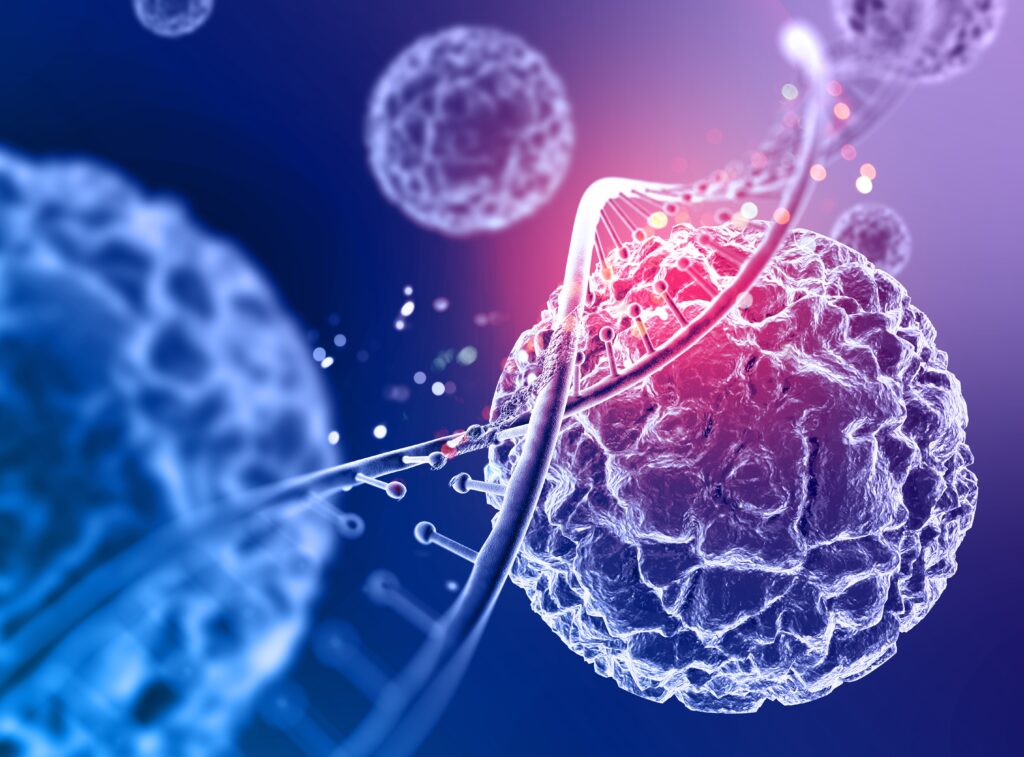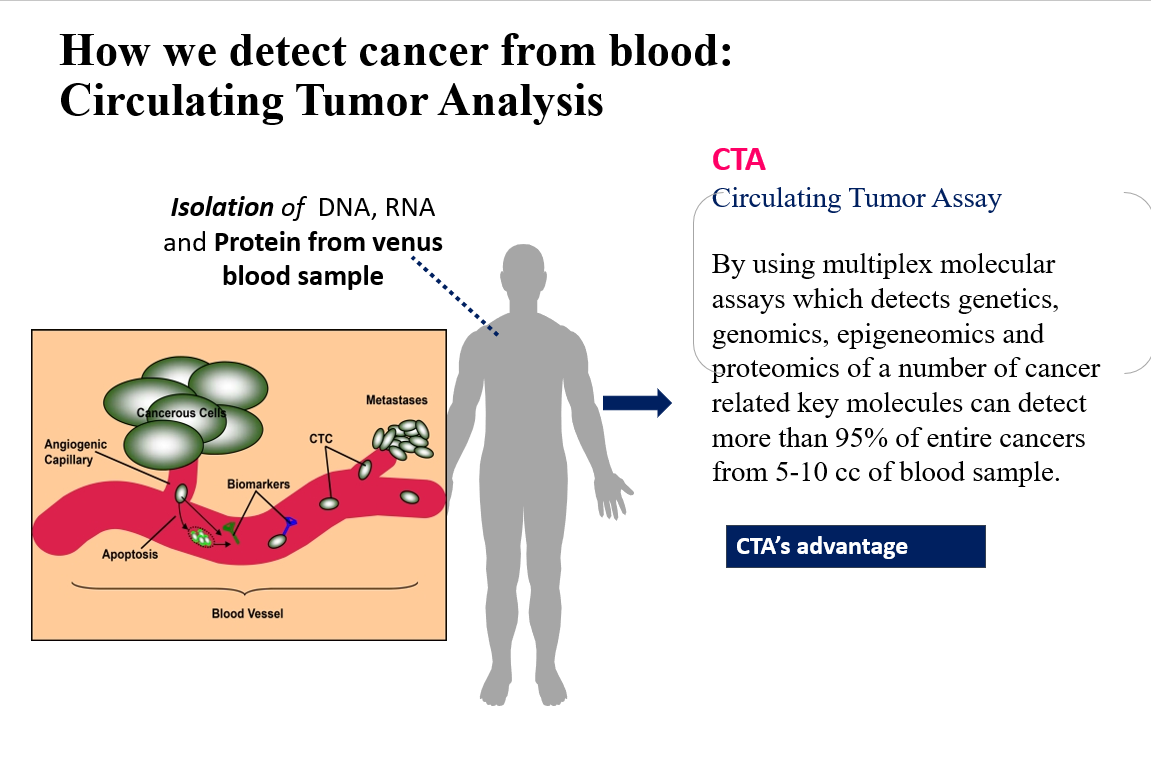Genetic testing for Cancer risk
- look in detail at your family history
- work out your risk of developing cancer
- work out whether you need a genetic test
Testing / Diagnosis
The exclusive technology to screen and detect cancer from sample of limited volume of human blood or any human samples. It detects cancer by analyzing circulating tumor cells and circulating tumor molecules (including DNA, RNA and protein), which is called a “circulating tumor analysis (“CTA”). The CTA can detect more than 95% of a variety of human cancer (so called “carcinoma”), including cancer of lung, breast, head and neck (including oral cavity, pharynx, larynx, thyroid and esophagus), brain, liver, alimentary tract (including stomach, those of colon, rectum and anus, pancreas), biliary tract, kidney, prostate, ovary, uterine cervix, uterine endometrium, prostate, urinary bladder and ureter from blood sample of as little as 1 to 3 ml in volume. The CTA can detect early stage cancer, small cancer invisible by imaging studies such as CT scan PET scan and even precancerous lesions. CTA thereby provides best chance of cure and even opportunity of prevention of cancer.
MATCH test
DNA chip and next generation sequencing-based technology, which is a “Molecular Assay for Treatment CHoice” (so called “MATCH test” or “Cansolution Test”) which can identify a number of key molecules which play important role in controlling sensitivity or resistance of individual cancer to cancer therapy including anticancer drug (such as chemotherapeutic drug, molecular targeting drug, antibody drug, immune check point inhibitors), immunotherapy or radiation therapy. This “MATCH test” is highly valuable to guide tailor made therapy of individual cancer, which maximizes chance of success and safety of cancer treatment. The “MATCH test” can be applied to guide individualized cancer therapy in any human samples including not only small volume of venous blood but also urine, stool, pleural fluid, ascitic fluid, fine needle aspiration cell suspension, cervicovaginal swab, bronchoscope lavage solution, saliva, tissue biopsy specimen either fresh or microscopic slides or those embedded in paraffin block.

